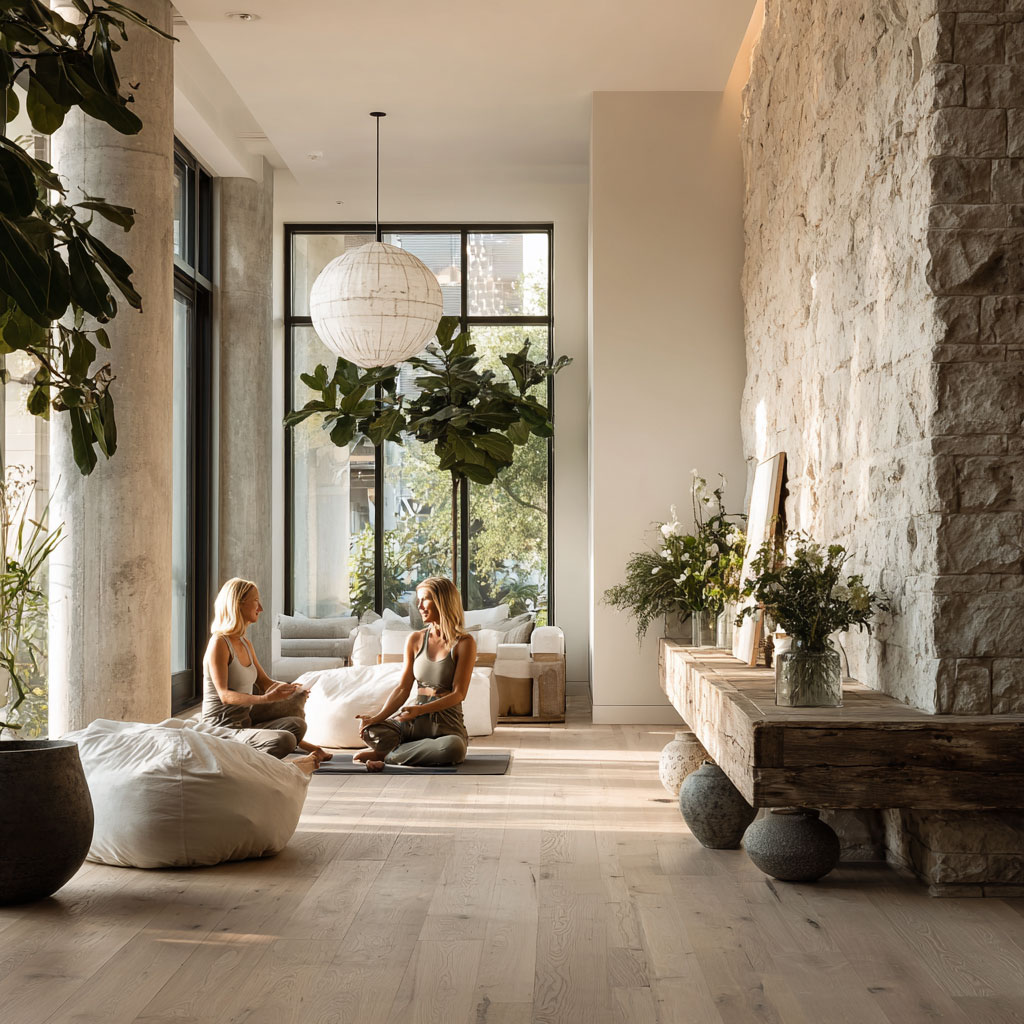Industry Insights

The New Recovery
Restorative Spaces Are Shaping the Future of Wellbeing
The wellness industry focused almost entirely on output, work harder, lifting heavier, burn more calories, and optimize every minute. Yet today’s adults are carrying unprecedented levels of stress, anxiety, cognitive overload, and emotional fatigue. The result is a simple but powerful truth: people are exhausted, not unmotivated.
That is why recovery has moved from the periphery of wellness to its center. And why restorative spaces, warm, calming, intentionally designed environments, are becoming essential for adults seeking a more grounded, sustainable, and balanced way of living.
Recovery Is Not Optional — It’s Foundational
Recovery does more than create a sense of relaxation. It regulates the nervous system, restores energy, supports cognitive clarity, reduces inflammation, and improves long-term emotional health. Adults who integrate restorative practices into their weekly routines experience stronger resilience, better sleep, and a deeper sense of ease in daily life.
Recovery isn’t a luxury. It’s physiology
Without it, even the most consistent wellness routines become hard to sustain.
Why Restorative Spaces Matter More Than Ever
The average adult’s day is filled with micro-stressors: notifications, deadlines, caretaking, decision-making, digital noise, and a constant stream of stimulation. Traditional environments do little to counterbalance this. Adults need places that bring the mind down from overload, spaces designed to quiet the system, soften tension, and create room to breathe.
This is where restorative environments make all the difference.
Warm lighting. Sound-dampened rooms. Gentle temperature contrasts. Natural materials. Intentional design. A slower, calmer rhythm that gives the nervous system permission to reset.
Beyond Amenities: A New Kind of Environment
Many wellness spaces have offered “amenities” like saunas or stretching mats, but the future goes far deeper. Modern restorative environments integrate:
- Infrared heat and thermal therapies
- Guided breathwork
- Calming aromatherapy
- Quiet lounges
- Low-stimulus spaces
- Restorative movement sessions
- Cold therapy
- Meditative zones
These aren’t perks; they are tools for regulating mood, restoring mental clarity, and creating equilibrium in a chronically overstimulated world.
Restorative spaces are where adults finally feel themselves exhale.
Recovery Is Also Social
People often picture recovery as a solitary practice, but it can be profoundly relational. Sharing a quiet moment before a sauna, decompressing after a slow restorative class, or sitting with a friend in a serene lounge deepens connection.
Stillness creates trust.
Calm fosters conversation.
Slowness brings people together.
Adults are craving places where they can rest and relate, where wellbeing feels communal, not isolated.
Recovery and Longevity Are Deeply Linked
Emerging research makes the connection clear: practices that activate the parasympathetic nervous system play a major role in longevity, cognitive sharpness, inflammation reduction, and emotional stability. Recovery strengthens the systems that support a longer, healthier life.
Longevity is no longer just about living more years.
It’s about improving the quality of the years you have.
Recovery is one of the most powerful ways to do that.
How SOZO Elevates the Recovery Experience
At SOZO, recovery is a core expression of wellbeing. Designed with intention, our environments foster calm, clarity, comfort, and connection, inviting members to move, restore, and renew in spaces that feel grounding and deeply human.
Instead of forcing the pace of the outside world, SOZO creates an atmosphere that invites you to slow down. To reconnect emotionally. To rebuild your energy. To feel whole again.
The Future of Wellness Is Restoration
As adults rethink what wellbeing truly means, restorative spaces are becoming essential. They offer more than relaxation; they create conditions for a healthier, more emotionally balanced, more connected life.
For adults seeking a calmer path toward wellbeing, one rooted in renewal rather than depletion, the future is clear:
Recover deeply.
Restore often.
Live well.

